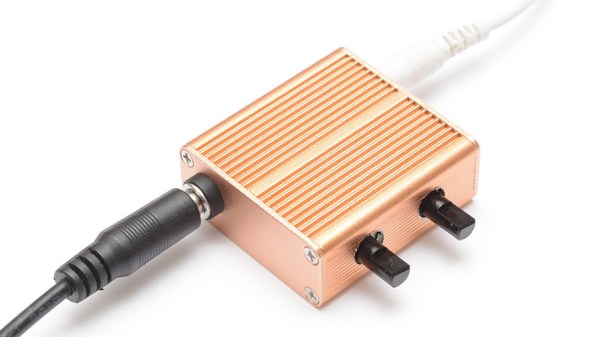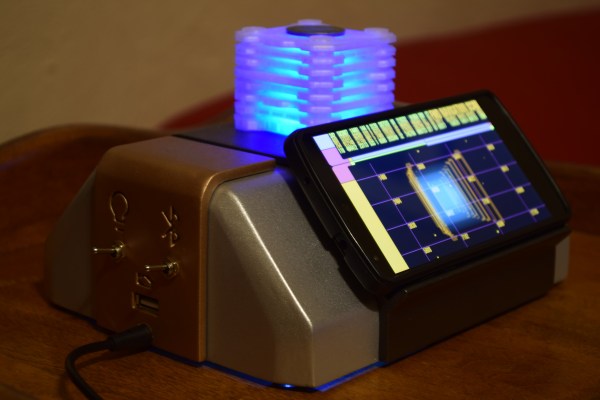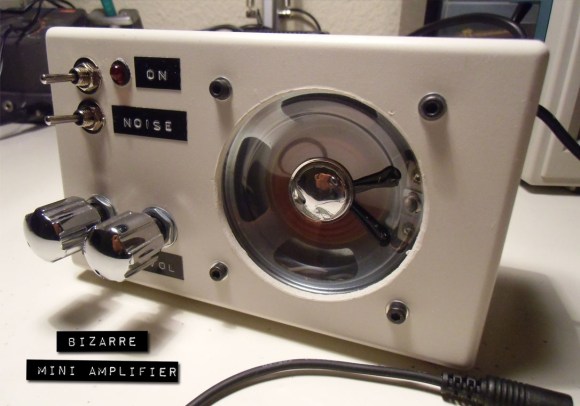We mentioned last week how robotaxi provider Cruise was having a no-good, very bad week, after one of their driverless taxis picked a fight with a semi, and it was revealed that amorous San Franciscans were taking advantage of the privacy afforded by not having a driver in the front seat. It appears that we weren’t the only ones to notice all the bad news, since California’s Department of Motor Vehicles issued an order to the company to cut its robotaxi fleet in half. The regulatory move comes after a recent Cruise collision with a fire truck, which injured a passenger in the taxi. Curiously, the DMV order stipulates that Cruise can only operate 50 vehicles during the day, while allowing 150 vehicles at night. We’d have thought the opposite would make more sense, since driving at night is generally more difficult than during daylight hours. But perhaps the logic is that the streets are less crowded at night, whereas daytime is a more target-rich environment.
white noise7 Articles
Analog Noise Generator, Fighter Of Other Noises
A chaotic drone of meaningless sound to lull the human brain out of its usual drive to latch on to patterns can at times be a welcome thing. A nonsense background din — like an old television tuned to a dead channel — can help drown out distractions and other invading sounds when earplugs aren’t enough. As [mitxela] explains, this can be done with an MP3 file of white noise, and that is a solution that works perfectly well for most practical purposes. However he found himself wanting a more refined hardware noise generator with analog controls to fine tune the output, and so the Rumbler was born.

The Rumbler isn’t just a white noise generator. White noise has a flat spectrum, but the noise from the Rumbler is closer to Red or Brownian Noise. The different colors of noise have specific definitions, but the Rumbler’s output is really just white noise that has been put through some low pass filters to create an output closer to a nice background rumble that sounds pleasant, whereas white noise is more like flat static.
Why bother with doing this? Mainly because building things is fun, but there is also the idea that this is better at blocking out nuisance sounds from neighboring human activities. By the time distant music (or television, or talking, or shouting) has trickled through walls and into one’s eardrums, the higher frequencies have been much more strongly attenuated than the lower frequencies. This is why one can easily hear the bass from a nearby party’s music, but the lyrics don’t survive the trip through walls and windows nearly as well. The noise from the Rumbler is simply a better fit to those more durable lower frequencies.
[Mitxela]’s writeup has quite a few useful tips on analog design and prototyping, so give it a read even if you’re not planning to make your own analog noise box. Want to hear the Rumbler for yourself? There’s an embedded audio sample near the bottom of the page, so go check it out.
For a truly modern application of white noise, check out the cone of silence for snooping smart speakers.
Play To The Beat Of This Robotic Drummer In A Box
No drummer? No problem! With a little ingenuity, you can stuff the essentials of a drum kit into a box, and automate your rhythm section.
Mind you, [Franco Molina]’s “DrumCube” doesn’t quite have the flash of a human drummer, but it does keep a steady beat and has a charm of its own. The drum machine is mostly mechanical, reminding us somewhat of the Wintergatan Marble Machine which is as captivating to watch as it is to hear. The DrumCube has a snare drum played by two servo-controlled sticks, a kick drum using foam waggled back and forth between two piezo transducers hooked to a low-pass filter, and a reverse-biased transistor white noise generator used for the hi-hat. Sadly, the large gear appears to be just for show. An Arduino runs everything and makes sure the mechanical drum hits are synced to the electronic cymbals, which was no mean feat.
The video below shows it in action accompanying [Franco] on his guitar, and it looks as good as it sounds. Prefer a more compact, all-electronic drum kit? Here’s one that fits in your pocket.
Continue reading “Play To The Beat Of This Robotic Drummer In A Box”
Win Back Some Privacy With A Cone Of Silence For Your Smart Speaker
To quote the greatest philosopher of the 20th century: “The future ain’t what it used to be.” Take personal assistants such as Amazon Echo and Google Home. When first predicted by sci-fi writers, the idea of instant access to the sum total of human knowledge with a few utterances seemed like a no-brainer; who wouldn’t want that? But now that such things are a reality, having something listening to you all the time and potentially reporting everything it hears back to some faceless corporate monolith is unnerving, to say the least.
There’s a fix for that, though, with this cone of silence for your smart speaker. Dubbed “Project Alias” by [BjørnKarmann], the device consists of a Raspberry Pi with a couple of microphones and speakers inside a 3D-printed case. The Pi is programmed to emit white noise from its speakers directly into the microphones of the Echo or Home over which it sits, masking out the sounds in the room while simultaneously listening for a hot-word. It then mutes the white noise, plays a clip of either “Hey Google” or “Alexa” to wake the device up, and then business proceeds as usual. The bonus here is that the hot-word is customizable, so that in addition to winning back a measure of privacy, all the [Alexas] in your life can get their names back too. The video below shows people interacting with devices named [Doris], [Marvin], [Petey], and for some reason, [Milkshake].
We really like this idea, and the fact that no modifications are needed to the smart speaker is pretty slick, as is the fact that with a few simple changes to the code and the print files it can be used with any smart speaker. And some degree of privacy from the AI that we know is always listening through these things is no small comfort either.
Continue reading “Win Back Some Privacy With A Cone Of Silence For Your Smart Speaker”
Star Trek Phone Dock Might As Well Be From Picard’s Night Stand
Star Trek is often credited with helping spur the development of technologies we have today — the go-to example being cell phones. When a Star Trek April Fool’s product inspires a maker to build the real thing? Well, that seems par for the course. [MS3FGX] decided to make it so. The 3D printed Star Trek-themed phone dock acts as a Bluetooth speaker and white noise generator. The result is shown off in the video below and equals the special effects you expect to find on the silver screen.
Taking a few liberties from the product it’s based on — which was much larger and had embedded screens — makes [MS3FGX]’s version a little more practical. Two industrial toggle switches control a tech cube nightlight and the internal Bluetooth speaker. An NFC tag behind the phone dock launches the pre-installed LCARS UI app and turns on the phone’s Bluetooth. Despite being a challenge for [MS3FGX] to design, the end product seems to work exactly as intended.
Continue reading “Star Trek Phone Dock Might As Well Be From Picard’s Night Stand”
Bizarre Mini Amplifier + White Noise Generator?
[Jordi] made this awesome looking mini amplifier which has a rather unusual feature. He’s calling it the Bizarre Mini Amplifier because it also has a white noise generator built right into it! Bizarre right?
Now, most people would just find a suitable amplifier and put it into a nice box, but not [Jordi]! He’s designed the amplifier circuit from the ground up! It features four distinct stages like most typical amplifiers:
- Impedance Adapt Stage: Two OPAMPS for both the left and right channels — The high input impedance allows for different audio sources to be connected without affecting the output.
- Mixer stage: Combines the left, right and noise signals into one, using a third OPAMP. A potentiometer is the output resistor which allows for the volume control.
- Filter Stage: A simple filter stage that uses a R-C low-pass filter, another potentiometer controls the tone.
- Power Stage: A final power amplifier to boost the output.
After building the circuit, there was a bit of troubleshooting to get it to work properly, so if you’re interested [Jordi] has done a great write-up of this on his blog.
Finally, he decided to add a white noise generator after he discovered it helps him sleep. This is the one part of the project that he didn’t actually go into detail for! But, considering it’s just white noise, we could probably figure out what he did. Stick around after the break to see the device in action!
Continue reading “Bizarre Mini Amplifier + White Noise Generator?”
Generating Random Numbers From White Noise

Even though rand() may be a good enough random number generator for making a video game, the patterns of random bits it spits out may not be sufficient for applications requiring truly random data. [Giorgio] built his own random number generator, and after many statistical tests it ended up being random enough for a few very complex calculations.
Previously, we saw [Giorgio] generate random numbers with a Chua circuit, but for all the complexity of building an electronic strange attractor there’s actually a much simpler source of random data: a white noise generator.
[Giorgio]’s random number generator for this project is just a pair of resistors, with an op-amp buffer, amplifier, and current switch to turn analog data into a digital output of random 1s and 0s. [Giorgio] sampled this data by plugging the digital out into one of the GPIO pins of a Raspberry Pi and recording the data with s small script.
To verify his sequence of bits was actually random, [Giorgio] performed a few tests on the data, some more reliable in determining randomness than others.
Because every project needs a few awesome visualizations, [Giorgio] plotted each sequence of bits as either a black or white pixel in a bitmap. The resulting image certainly looks like television static, so there are no obvious problems with the data.
[Giorgio] also performed an interesting Monte Carlo simulation with his megabytes of random data: By plotting points on a plane (with a range from 0,0 to 1,1), [Giorgio] can approximate the value of π by testing if a point is inside a circle with a radius of 1. The best approximation of pi using 10,000 points of random data came out to be 3.1436
Of course [Giorgio] put his random data through a few proper statistical tests such as rngtest and dieharder, passing all the tests of randomness with flying colors. An interesting build that shows a small glimpse of how hard generating really random numbers actually is.

















